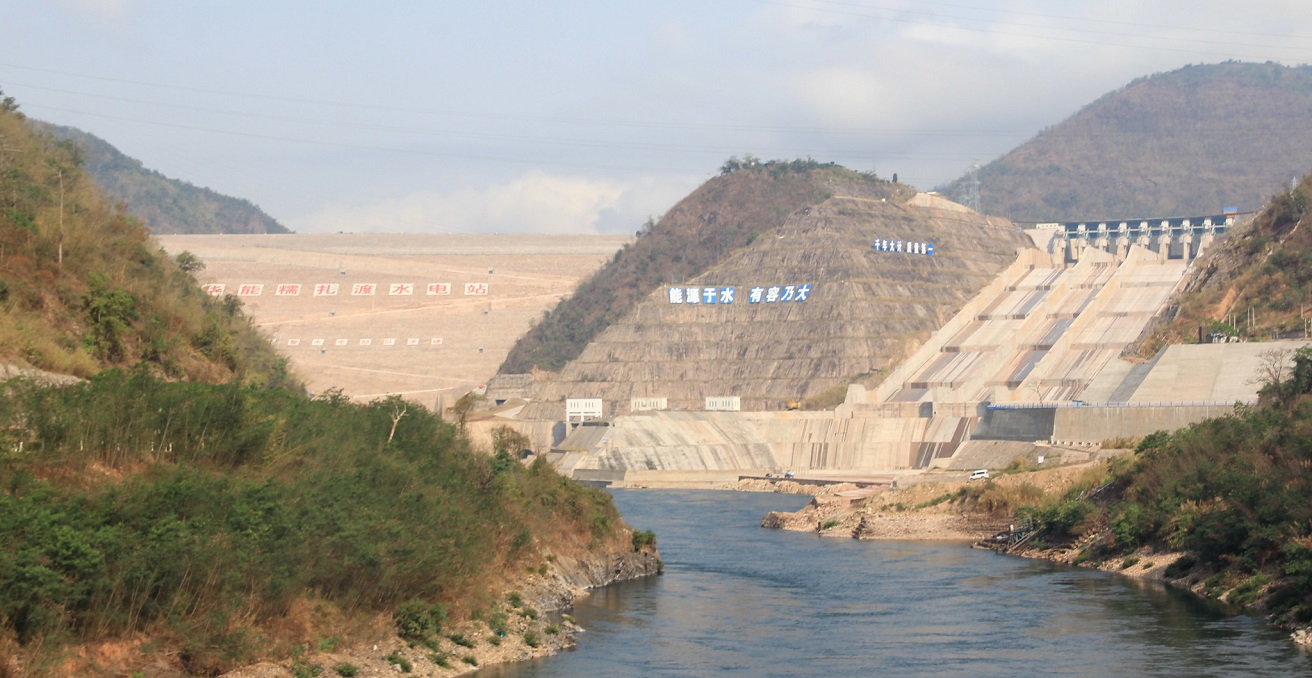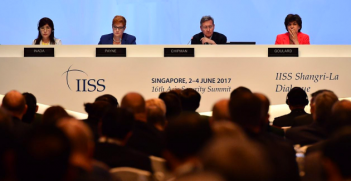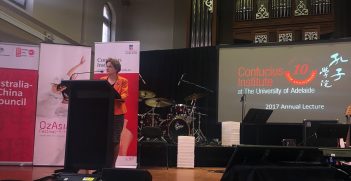The Inclusive Institutional Balancing of the Lancang-Mekong Cooperation

The creation of the LMC is merely a reflection of the intense power rivalry. The LMC helps China to protect its interests, strengthen its influence, and reduce the influence of other powers and their initiatives.
Among the internal players in the Mekong region, Thailand is the most powerful and the most proactive. In contrast, Vietnam does not have a Vietnamese-led institution that enables it to project more influence over Mekong countries. One way that Vietnam could challenge China in the Mekong is by raising the Mekong issue during the ASEAN Summit Meeting. Nonetheless, Vietnam, at this point, is not a target for Chinese institutional balancing. Other Mekong countries, (e.g. Myanmar, Laos, and Cambodia) remain silent on the Mekong issues, for these countries rely heavily on Chinese economic support.
Thailand is a different case. Thailand has advanced an initiative that strengthens its power and counterbalances China’s influence. For China, incorporating Thailand into its Lancang-Mekong Cooperation (LMC) is important for two reasons. First, via the LMC, China aims that Thailand will not form an institutional balancing effort with other powers, such as the US and Japan, as Thailand is the closest ally of the US in mainland Southeast Asia. While China has forged close economic ties with Bangkok in recent years, this security arrangement between Thailand and the US, in addition to the current institutional collaborations among Thailand, the US, and Japan, is a serious concern for Beijing. Thailand, the US, and Japan have all have pledged to work together to develop the Mekong region.
Even though the current Thai government, under General Prayut Chan-o-cha, seems to have amicable ties with China on economic and military relations, the Mekong issue remains cause for alarm for General Prayut. The Thai government is under tremendous pressure from the civil society groups and Thai nationals affected by severe droughts. Like his predecessors, even though General Prayut did not openly criticise China over drought issues, he expressed his “grave concern” about Chinese dam construction on the Mekong to the Thai public. As such, the Thai government is likely to take action against the Chinese dam construction, such as seeking external powers like the US and Japan to be even more involved in the Mekong, especially if it is under extreme pressure from its people.
Second, via the LMC, China expects Thailand to cooperate on the Chinese cross-border trade with other riparian states along the Mekong River. As China keeps growing economically, its cross-border trade along the Mekong River with Myanmar, Laos, and Thailand is also increasing. The Golden Triangle is a joint area in which crime is widespread, and which the Mekong River flows across. Given that China has increasingly conducted its shipping of exports via the Golden Triangle, which borders Thailand, Laos, and Myanmar, this area is highly salient for China’s interaction with such states. Following a 2011 attack on two Chinese cargo boats that killed 13 Chinese citizens in the Thai part of the Mekong River, China, along with Myanmar, Thailand, and Laos, conducts joint patrols along the Mekong River to monitor any potential criminal activity.
To keep Thailand and other Mekong countries content, China tries to improve its bilateral relations within the LMC framework while building and promoting certain norms and discourses to dispel the suspicion of Chinese hegemony in the Mekong. In 2019, Lyu Jian, China’s Ambassador to Thailand, highlighted various cooperation areas, such as water resource management, e-commerce, and cross-border trade that exist in the LMC framework. He also pointed out the future possibility of cooperation in areas such as agriculture, vocational training, youth exchanges, healthcare, and environment protection. The actual amount of financial investment into these programs remains undisclosed. In early 2020, Chinese Foreign Minister Wang Yi expressed China’s intention to collaborate with Thailand’s Ayeyawady-Chao Phraya-Mekong Economic Cooperation Strategy (ACMECS) during the Fifth LMC Foreign Ministers’ Meeting in Laos, though it appears that China is working with ACMECS to advance its own interests.
China promotes a “win-win cooperation” discourse within the LMC. China aims to convince members that the institution is not solely dominated by China and that it should be viewed as a concerted effort by all members. Chinese Premier Li Keqiang, who proposed creating the LMC, assures that “the LMC is equal, inclusive and practical.” Without directly mentioning the names of the existing mechanisms in the region, Wang Yi stated that “Compared with other Mekong River cooperation mechanisms, the LMC better meets the six countries’ practical needs, pays more attention to the advancement of specific projects and better embodies relevant countries’ wish of equality, mutual assistance and win-win cooperation.”
Not all Mekong countries, however, accept China’s position on this. Instead, various countries, including Thailand and Vietnam, the two main players in the Mekong, view China’s actions in the Mekong and China’s LMC with concern. Moreover, in terms of how the LMC may evolve, the more China increases its institutional influence, the more outside powers will aim to do the same. Thus, the future will see intense institutional competition, namely between the US and China and between Japan and China in the Mekong.
At the launch of the Mekong-US Partnership in mid-2020, the US pledged $153 million to Mekong countries, which covers various areas of cooperation, such as connectivity, energy security, water resource management. The US recently imposed sanctions on a Chinese company, Union Development Group, operating in Cambodia, accusing the company of environmental degradation and corruption. The US stated that it was, in contrast to China, standing with the people of Cambodia and concerned about the environment in the country. If Mekong countries do not take US concerns seriously, a similar pattern could emerge, with the US aiming to limit China’s actions regarding Mekong issues.
Even though China is the most powerful LMC member, it still relies on its economic and ideational ability to persuade members to agree upon certain arrangements. The Chinese concept of “a community of shared future for mankind” was well articulated and promulgated by Chinese Premier Li Keqiang during the 2018 LMC summit in Phnom Penh, Cambodia.
Similar visions and concepts that fall within the cooperation framework are well articulated in the Sanya Declaration, the Phnom Penh Declaration, and the Five-Year Plan of Action on Lancang-Mekong Cooperation (2018–2022). The first document was adopted during the first LMC Leaders’ Meeting in March 2016 in the Chinese city of Sanya. The document outlines 26 measures that need to be implemented as agreed by the LMC members. One noticeable statement of this document is the emphasis on making the LMC a “new type of international relations” that features “win-win cooperation.” The second document was adopted in January 2018, during the second LMC Leaders’ Meeting in Phnom Penh and reiterates the key points of the Sanya Declaration. The third document lays out the working mechanisms with the aim to institutionalise the framework of the LMC. Similar to the first document, the Five-Year Plan of Action also mentions the “new type of sub-regional cooperation” that is “inspired by South-South Cooperation.”
These concepts (e.g. “win-win”) are not a novelty in Chinese foreign policy. Speaking in Moscow in 2001, then Chinese President Jiang Zemin described a “new type of state relations.” China’s current president, Xi Jinping, referred to a “new type of great power relations” during his trip to the US in 2012. Essentially, these concepts are used to describe the relationship between China and the other two major powers—the US and Russia.
But what can be learned and applied in the case of the LMC is the Chinese intention to go beyond great power relations. With this in mind, China wishes to present itself as a responsible and benign major power that does not intend to use its overwhelming power to coerce the downstream countries. However, the degree to which China adheres to its own professed claims remains to seen.
Sovinda Po is a PhD candidate in International Relations at Griffith University, Australia and a Research Fellow at the Cambodian Institute for Cooperation and Peace. His research interest centres around the relationship between China and mainland Southeast Asia.
Christopher B. Primiano is an assistant professor of international relations at KIMEP University in Kazakhstan. Chris’ research focuses on Chinese domestic and international politics.
This article is an edited extract from Po and Primiano’s article in the Australian Journal of International Affairs titled “Explaining China’s Lancang-Mekong cooperation as an institutional balancing strategy: dragon guarding the water.” It is republished with permission.





